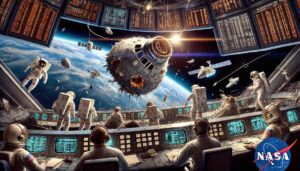On April 11, 1970, Apollo 13 launched from Kennedy Space Center, carrying three astronauts on what was supposed to be NASA’s third moon landing. Commander Jim Lovell, Command Module Pilot Jack Swigert, and Lunar Module Pilot Fred Haise were ready to make history. However, just two days into the mission, an oxygen tank exploded, crippling the spacecraft and turning a routine mission into a harrowing fight for survival. What followed was one of the most incredible stories of human ingenuity, teamwork, and perseverance in the face of near-certain disaster.
“Houston, we’ve had a problem.” These words, spoken by Swigert and repeated by Lovell, signaled the beginning of a crisis that no one had anticipated. The explosion not only caused a critical loss of oxygen but also severely limited power, water, and the spacecraft’s ability to navigate. The crew’s original mission—to land on the Moon—was immediately abandoned. Now, the only objective was getting home alive.
Mission Control in Houston, along with the astronauts, worked tirelessly to overcome seemingly impossible obstacles. The crew had to move into the Lunar Module, which became their makeshift lifeboat, despite the fact that it was never designed to support three people for an extended period. Engineers on the ground scrambled to find ways to conserve power, create a new trajectory, and even construct a life-saving carbon dioxide filter using only the materials available onboard.
Against all odds, Apollo 13 slingshotted around the Moon and began its perilous journey back to Earth. The world held its breath as the damaged spacecraft re-entered Earth’s atmosphere, uncertain if the heat shield would hold. Then, after four minutes of terrifying radio silence, a crackling voice came through—Apollo 13 had survived. The astronauts splashed down safely in the Pacific Ocean, greeted as heroes not for landing on the Moon, but for defying disaster with resilience and innovation.
Apollo 13 became known as the “successful failure”—a mission that did not achieve its original goal but demonstrated the extraordinary power of human problem-solving. It remains one of NASA’s finest hours, a reminder that even in the face of overwhelming odds, determination, teamwork, and ingenuity can bring people safely home.

